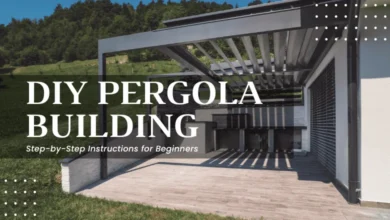Seasonal Home Maintenance: Preparing Your Heater for Winter

As winter approaches, the vitality of a well-prepared home becomes paramount. We bypass the frills and delve into the essence of seasonal home maintenance, placing a spotlight on a crucial aspect—preparing your heater for the chilly months ahead. Embark on a journey guided by statistics and practical insights to ensure your heating system is ready to provide a warm and comfortable winter.
Checking and Replacing Air Filters
Our journey begins with a seemingly simple yet transformative task—checking and replacing air filters. The U.S. Department of Energy asserts that this act can reduce energy consumption by 5-15%, laying the groundwork for understanding how a small effort can yield significant results.
The Role of Clean Air Filters in Heater Efficiency
Clean air filters play an integral role in home heating efficiency. The U.S. Department of Energy states that replacing a clogged filter with a clean one can lower your heater’s energy consumption by 5-15%. Maintaining your air conditioner is equally crucial.
Energy Star states that households can save 5-15% on their winter heating bills simply by regularly replacing air filters.
Aim to replace filters once every three months or more frequently if you have pets or experience high usage. This small act keeps air flowing freely through your heating system, enhancing efficiency.
Inspecting and Cleaning Ductwork
As we proceed, we shift our focus to the often-overlooked aspect of ductwork. The EPA’s estimation that homes lose 20-30% of heated or cooled air due to leaky ducts illuminates the critical role clean ducts play in maintaining energy efficiency. Explore the impact of duct maintenance on both comfort and utility savings.
Significance of Clean Ducts in Efficient Heating
Clean and well-sealed ductwork minimizes restrictions to airflow, enabling heated air to circulate freely throughout your home. The Environmental Protection Agency (EPA) estimates that the typical home loses 20-30% of its heated or cooled air due to leaky ducts. Properly sealed and insulated ducts can improve HVAC efficiency by up to 20%, according to the U.S. Department of Energy.
Inspect ducts for cracks and gaps, seal any leaks with mastic paste or metal tape, and ensure insulation wraps fully around all ductwork. Enhancing ductwork integrity pays dividends in warmer and more breathable indoor air.
Testing Thermostat Functionality
Having optimized the pathways through which heated air flows, let’s now turn our attention to the thermostat. The Energy Information Administration’s revelation that even a 1-degree adjustment can result in a 1% change in energy use underscores the thermostat’s central role. Join us as we explore the precision required for efficient and cost-effective winter heating.
Importance of Accurate Thermostat Readings
An accurate thermostat ensures your system heats to the precise temperature you set, optimizing comfort while avoiding energy waste. The importance of an accurate thermostat becomes especially apparent with systems of high-temperature heaters, such as those powered by natural gas, propane, or oil. According to the Energy Information Administration (EIA), adjusting your thermostat by just 1 degree Fahrenheit can result in a 1% change in energy use.
Test your thermostat’s accuracy and calibration about once a year. Upgrade to a programmable thermostat to maximize efficiency by automatically adjusting temperatures during unoccupied times. The Lawrence Berkeley National Laboratory found that programmable thermostats can save households about 10% annually on heating and cooling costs.
Checking for Leaks and Insulating
Our journey wouldn’t be complete without addressing the holistic integrity of your home’s thermal envelope. The EPA suggests that sealing air leaks and adding insulation can save an average of 15% on winter heating costs, setting the stage. Uncover the practical steps to fortify your home against energy loss and soaring utility bills.
Identifying and Sealing Air Leaks
Heat naturally escapes through cracks and gaps in your home’s walls, windows, doors, and roof. The EPA suggests that homeowners can save an average of 15% on heating and cooling costs by air-sealing their homes and adding insulation properly. Use caulk and weather stripping to plug leaks around windows, doors, electrical outlets, and any gaps allowing outdoor air to penetrate the interior.
Proper insulation also plays a key role in preventing heat transfer and retaining comfortable indoor temperatures. In a study by the North American Insulation Manufacturers Association (NAIMA), appropriate insulation can significantly reduce winter heating costs.
The following bar chart represents the average annual heating costs in the four regions of the U.S.
Inspecting and Cleaning Heating System Components
What good is a sealed and insulated home without an operational heating system to keep it warm? Just as a healthy body requires unobstructed arteries and veins, an efficient heating unit relies on clean components and unimpeded airflow.
Examine your furnace, heat pump, or boiler based on manufacturer guidelines to address any wear and tear. Replacing a cracked heat exchanger or servicing clogged drain lines prevents issues down the road. While do-it-yourself maintenance checks provide value, an annual inspection by an HVAC professional detects problems you may overlook. Investing in your system’s health equals investing in your family’s comfort.
Conclusion
Our insightful expedition emphasized practical preparation steps, including replacing air filters, cleaning ductwork, testing the thermostat, sealing air leaks, adding insulation, and inspecting heating components. Executing these pivotal tasks sets the stage for an efficiently heated and comfortable home this winter.
As the cold weather approaches, safeguard your family against freezing temperatures and inflated energy bills. Join the movement of informed homeowners embracing proactive seasonal maintenance. Take the first step by scheduling a professional heating checkup and implementing the hands-on tips outlined here. Be a leader in your community by exemplifying the wisdom of a little effort today for thermal comfort and stability tomorrow.
Frequently Asked Questions
How often should I replace the air filter in my heater?
Industry experts recommend replacing air filters once every three months or sooner if you have pets or a high-usage home. Check filters monthly, and replace them as soon as they appear visibly dirty or clogged.
Is it necessary to hire a professional for heating system inspection and maintenance?
While DIY checks have merit, an HVAC professional has the skills and tools to thoroughly inspect all components and detect issues you may miss. Invest in an annual tune-up by a certified technician to keep your system running safely and efficiently.
What are the signs of a malfunctioning thermostat, and how can I troubleshoot it?
If indoor temperatures deviate significantly from thermostat settings, the thermostat likely needs adjustment or replacement. Try resetting to factory settings, checking batteries, examining wiring connections, and recalibrating to room temperature. If issues persist, replacing the thermostat resolves many functionality problems.
Key Takeaways
- Replace air filters every 3 months or sooner if you have pets or high usage to improve efficiency by up to 15% and reduce heating bills.
- Inspect, seal, and insulate ductwork to prevent losing 20-30% of heated air through leaks and optimize HVAC performance.
- Test and adjust your thermostat to ensure accurate temperature readings and settings, which can impact energy use by 1% per degree change.
- Identify and caulk air leaks, and improve insulation to save 15% on winter heating costs by containing heat transfer and retaining indoor warmth.
- Clean and inspect all heating system components for functionality and safety. Annual tune-ups by HVAC technicians detect issues you may overlook.






